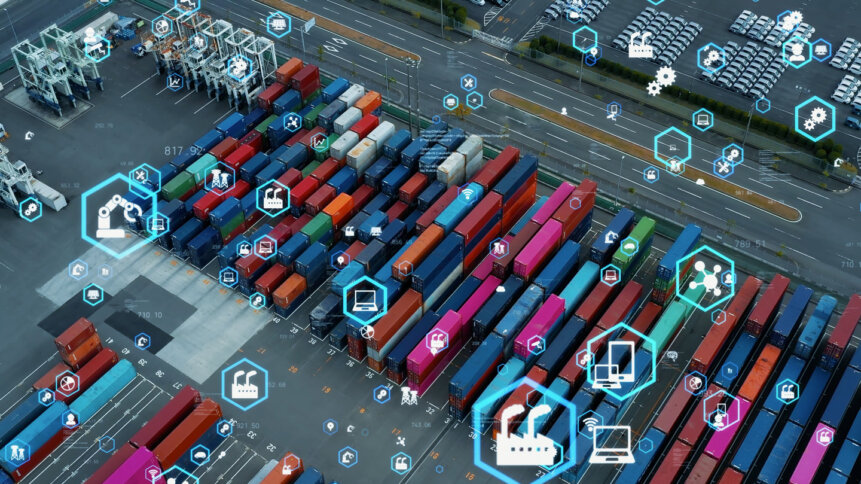The challenges of Scope 3 data collection

As business as a whole, and the tech industry in particular, with its complex supply chains, wakes up to the inconvenient truth of its obligations to lower its carbon footprint, Scope 3 emissions – and particularly, the process of gathering Scope 3 data – have become an increasingly thorny issue.
Scope 1 emissions are relatively straightforward to assess, because they’re emissions for which a accompany is directly responsible – eg the smoke coming out of your chimneys or the fuel being burned in your fossil-fueled vehicle fleet.
Scope 2 emissions are emissions for which a company’s operation is indirectly responsible – if you use an electric fleet, to avoid all those nasty Scope 1 emissions, Scope 2 covers the emissions from the making of the electricity used by your company. That’s more tricky to calculate, but by no means impossible.
Scope 3 emissions are the enigmatic emissions not produced or “consumed” by your business, but by those businesses which form part of your supply and value chain, in every direction. If your business depends on semiconductors, for instance, Scope 3 emissions cover the creation of the chips you buy from another company to add into your products.
As such, Scope 3 emissions are the hardest to find, quantify, and account for. But the law is the law – or rather it could be the law as early as 2024 – which means Scope 3 data is a thing that will soon have to be accounted for, so that, for instance, figures on the “greening” of supply chains stands at least a chance of being accurate.
So why so hard?
The difficulties of accurately acquiring and accounting for Scope 3 data can seem insurmountable – or certainly distracting from companies’ day-jobs of making and selling their products, though the EPA (Environmental Protection Agency) does provide a Greenhouse Gases (GHG) inventory checklist. Still, there has been evidence of companies either refusing to report their Scope 3 data, or more usually, not being aware that they needed to do it at all, which runs the risk of them accidentally “greenwashing” their reputation, while the Scope 3 data, were it collated, would tell a different and darker story.
To investigate the complexities of Scope 3 data, we sat down with Jarrod McAdoo, Director of Procurement at Ivalua, a procurement software company with a handle on value chains and Scope 3 complexities.
THQ:
What is so challenging about Scope 3 data that companies are regularly failing to collate it?
JMcA:
I would be a little hesitant to say right now that people are failing at it. I think there are some people who are trying to do it, who are probably failing at it. But there’s a large portion of people who just don’t know how to get started.
So there’s a level of maturity involved, and when you look at it in the United States, our market is behind for instance where the European Union is, especially, on driving some of these things forward. The first challenge for a lot of companies is just figuring out what it means.
Targets without plans.
I’ll give you an example. I’ve talked to brand new sustainability managers, or they have a supplier carbon manager, (which is a new position we’re starting to hear about), and I’ll have some discussions with them. And I’ll say, “How are you planning to tackle it?” And sometimes they have little to no idea. Their CEO just made this commitment that the company’s going to be carbon neutral by 2050, but they have no idea how to get started on that road.
Scope 1 and Scope 2, that’s a little easier, because there’s only one organization to investigate, and it’s their own. The second you take that challenge out to the supply base, you multiply its complexity by tens of thousands. So that’s the first challenge.
THQ:
Oh good, we love it when the first challenge is tens of thousands of times more complicated than an internal audit.
JMcA:
That’s Scope 3 for you. But not every company’s immature on Scope 3. Some, like IKEA, are really blazing a path in a lot of ways, and of course, for every “to-consumer” company there is, there are lots of supplier companies, and there’s that variety among suppliers too.
Some suppliers are used to doing Scope 3 data provision because they have lots of customers who insist on it. Some suppliers might say “I’ve heard of this, but I don’t know what it is.” And we have some who say it falls under the umbrella of their ESG (Environmental, Social, and Governance) program.
There’s a big focus in the US on making sure we have social diversity in our supply base. So we want to make sure we use minority businesses, small businesses, veteran-owned business, disability-centered businesses, those types of things. Sustainability challenges really fight against that, because you develop these small organizations, but then you come at them, asking them to understand a whole new set of requirements and a whole new set of overheads and reporting. And if you hold that against them, and don’t help them develop, you really start to defeat your program.
So… those are some of the main challenges companies have with Scope 3 data reporting.
THQ:
We feel like we’ve just wandered into a multi-dimensional minefield.
A material world.
JMcA:
Yeah. I mean, we’re reaching the point where we have some standards on collecting the information. And again, in the European Union, they’re driving more definitive regulations and requirements to say, this is what you have to do. But then if you look over here in the United States, we’re still messing around with rules about looking at your suppliers that are material. And that leads to the next question, which is how do you figure out the materiality of a supplier, and whether that’s up for interpretation.
So, that’s really making Scope 3 data collation a challenge right now, if you’re the person who’s actually required to do it. Assuming that you figure out a way through this, it really gets to be an issue of how you can then collect this information at scale.
You know, for many organizations, this is a priority to them, but it’s not a priority where they can hire 30 people, it’s a priority in terms of maybe they have a small team of 2, 3, 4 if they’re lucky, to run this. So how you go out and translate that to something at scale becomes the next challenge, which is really where as a solution provider, you can say “I can’t help you with the legislation, that’s a governmental thing. But where you should hold me responsible as a partner is, how can I help you scale? How can I help with business processes on those types of items?”
That’s the landscape of the challenges they’re facing. It’s the what, it’s the who, and then ultimately, it’s the how of the process – those are the standard questions that can stop some companies from getting to grips with their Scope 3 data.
In Part 2 of this article, we’ll dive deeper into how the multi-dimensional minefield of Scope 3 data collection can be made less painful with the right specialists in your corner.










